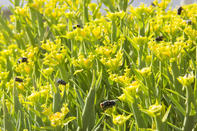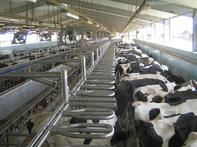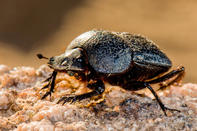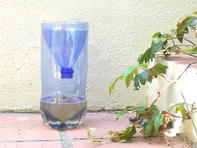Besides being a nuisance, flies are potential carriers of disease and may have a negative impact on animal health, especially in intensive production systems where animals are kept close together.

Field trials have shown that dairy cattle may lose between 25 minutes and up to five hours of feeding time per day due to the irritation of flies.
The best way to deal with flies is with an integrated management programme, where a variety of practices are used to target fly populations at different stages of development. The aim of the programme should be to keep fly numbers to a minimum.
Management

Here are five tips on ways to keep fly numbers in check: Firstly, reduce maggot and egg numbers by targeting places where flies can breed. Flies like to breed in manure and other rotten material, so it is important to keep animals and production areas clean. Sick animals and those with wounds and sores should be treated promptly to keep flies away and prevent secondary infections.
Dead animals should be removed from the production area as soon as possible and be disposed of in a hygienic way. They should either be burned or buried. The production area should be regularly cleaned and manure, litter, dirty bedding, spilled feed and broken eggs, if you are farming with poultry, should be managed properly.
If animals are not eating all their food, reduce the quantity to leave nothing for the flies. Manure, litter and bedding are ideal for composting, but the compost should be managed properly to prevent it from attracting flies. The compost area should preferably be some distance from the production area.

Secondly, nature is your friend. Some mites and beetles feed on fly eggs and maggots, while certain wasp species lay their eggs in the pupae.
These natural enemies may be released in the production area a couple of times per year and are a great help when the flies have developed resistance to chemical control methods.
It, nevertheless is an expensive practice and there usually is not enough of these enemies around when you need them most. It should therefore not be used as a standalone practice.

Thirdly, use traps and repellents. Sticky fly-paper coils do a good job in reducing adult fly numbers when used inside animal housing, while baited fly traps are effective in catching flies outside. The only problem with baited fly traps is that they smell bad.
Flies do not like dark places, they are usually found in sunlit areas in animal housing. Some farmers use leaves on the roof of the houses to reduce light intensity. The animals will also appreciate the extra shade in hot weather.
Some farmers plant certain herbs around the production area or use essential oils to repel flies.
Fourthly, use chemical control methods correctly. Chemical control is highly effective when used correctly and according to instructions. Wrong usage not only poses a health risk, but may result in flies becoming resistant to the product.
Modern insecticides should be used, as these are much safer, more targeted and generally more environmental friendly than the old organophosphate insecticides or DDT. Products exist to target either flies or maggots and to be used either on animals or their surroundings.
Some of these products contain baits to attract the flies. Research has shown that 40% to 60% of a fly problem can be eliminated by targeting the maggot stage.
Fifthly, make it a community project. It does not matter how good your fly management programme is, it will mean nothing if your neighbours are not keeping fly numbers on their farms or plots in check. Working together is better and more cost-effective than working alone.
By Glenneis Kriel